Dealing with the Dead
In Russia, the deaths of ordinary citizens are recorded quite accurately, so with a high degree of certainty we can say how many Russians die (and are born) every month. Rosstat publishes this data on the basis of documents from registry offices, and each death certificate says how a person died – this is what state statistics are based on.
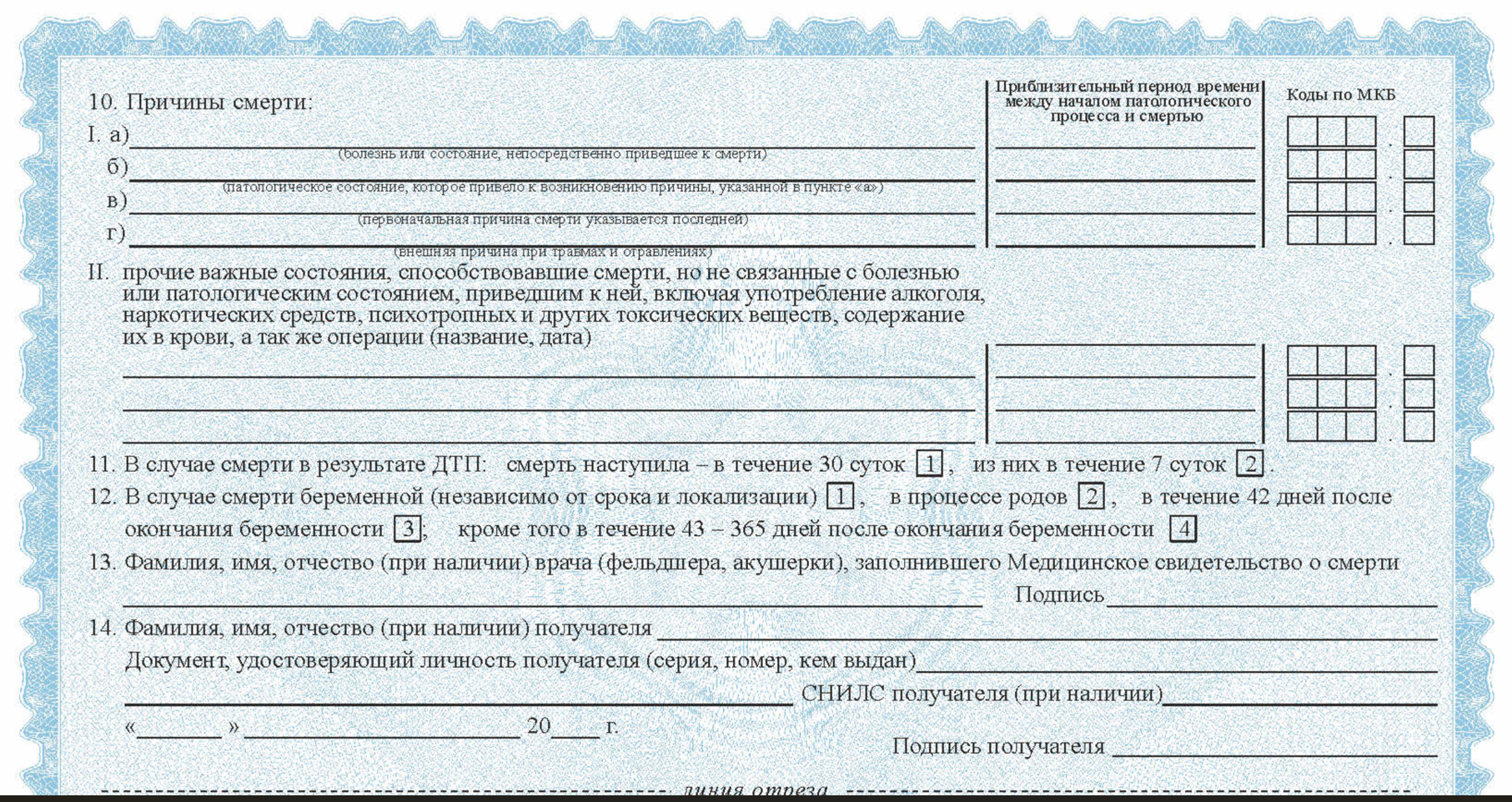
Based on this information, the effectiveness of programs to combat certain causes of death (illness, traffic accidents, alcohol and drug overdose, etc.) is evaluated. However, in Russia, for years, a system has been built in which, if necessary, the wrong disease or cause was recorded on the death certificate, due to which the person actually died.
One of the main motives for such actions is Putin’s “May Decrees” of 2012. They provided for a significant reduction in mortality by 2018 from tuberculosis, cardiovascular and oncological diseases, as well as a decrease in the number of deaths in road accidents and among infants. These goals have been achieved. For example, the death rate from tuberculosis began to decline sharply – along the way, the number of deaths among people with the human immunodeficiency virus increased. Nothing was said about HIV in the "May Decrees", so the Ministry of Health continues to pretend that this epidemic does not exist in Russia.
In addition, as the RBC investigation showed , elderly people who used to die from heart attacks, strokes and cancer, after 2012 began to leave simply “from old age”. Also, the citizens of Russia abruptly stopped committing suicide. Instead, they began to die from some "uncertain" external causes, according to a Novaya Gazeta study.

“Statistics is “drawn”, as its purpose is not to get the most complete picture of what is happening, but to assess how local officials work. So, after the first May decrees, when the directive was given to reduce mortality from cardiovascular diseases, our respondents often said that the wrong cause of death was indicated,” says Olga Molyarenko, Associate Professor at the National Research University Higher School of Economics Olga Molyarenko, Academic Supervisor of the State and Municipal Administration program. For many years she conducted field research on the work of municipal bodies in Russia and kept diaries on expeditions:
“According to medical statistics, the most common cause of death is cardiovascular diseases (strokes) and oncology. Many young people die from cirrhosis of the liver, hepatitis and anemia. When asked about “inaccurate” data, she said that their department submitted real data to Nizhny Novgorod (“we don’t want to correct the numbers”), but after that there were cases when an order came down and they had to change the data. <…> For example, there is a plan to reduce mortality from cardiovascular diseases. If a person died of a stroke, but at the same time he had diabetes mellitus, then diabetes mellitus will be indicated in the causes of death. Instead of diabetes, there may be asthma. <…> The department submitted real data, then an order came down [to set according to the standard]. “Moscow demands numbers, we show.”
In 2020, Russia faced unprecedented covid deaths, but the authorities for a very long time refused to admit that many of the measures taken were ineffective. Excess mortality – the proportion of people who would not have died in 2020-2022 if not for the pandemic – in Russia turned out to be one of the highest in the world. Official statistics on coronavirus could not explain most of it. According to Mediazona, as of June 2022, excess mortality in Russia amounted to almost 1.2 million people. The Economist gives an estimate of 1.3 million people for April 2023.
“The falsification of statistics during a pandemic is inextricably linked to lying about the causes of death in previous years. If there hadn’t been such lies before the pandemic, there would have been no prepared ground for lying so easily and naturally, brazenly and stupidly during covid,” notes independent demographer Alexei Raksha. Previously, he worked at Rosstat, but in the middle of the epidemic, he was fired from the department after his posts on Facebook that the state underestimates the number of cases and deaths from the coronavirus.
One of the most obvious cases of falsification is the so-called “Sobyaninskaya shelf”, when in August 2020 650-700 infected people died from the coronavirus in Moscow every day and not a person more. It was this death rate that the mayor of the city, Sergei Sobyanin, “ predicted ”. Novaya Gazeta reported on other similar cases. For professionals familiar with statistics, such “shelves” or “corridors” are a sign that the data is faked. “This cannot be done statistically, epidemiologically, or from the point of view of common sense,” explains Aleksey Raksha.
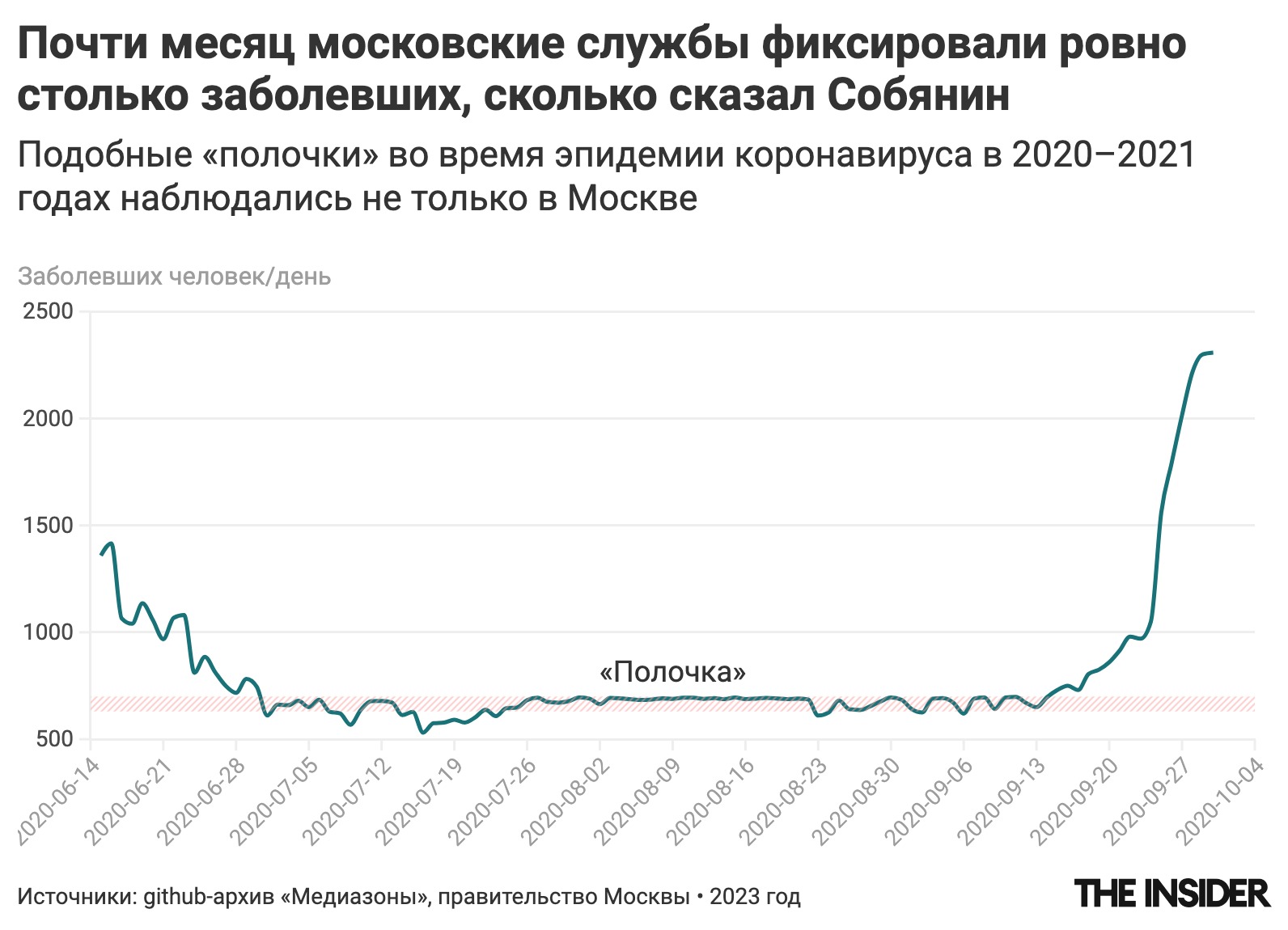
“If such falsifications are not detected, the image of the object is increasingly moving away from reality, and the authorities have the illusion of an improvement in the situation and complete control of all processes, because statistically they respond positively to the decisions made,” notes Olga Molyarenko.
Inflation tricks.
To calculate one of the key indicators in the economy – inflation (or consumer price index, CPI) – Rosstat determines which goods and services Russians buy most often. For example, it can be flour, caramel, stew, pasta, a visit to the doctor, renting an apartment, gasoline or utility services. The agency then measures prices for such goods and services in all regions of the country. The price of each good is multiplied by its expected consumption (that is, the share of household expenditure), and then all these values are added up and the resulting amount is recorded. Inflation is the difference from month to month, or from year to year, of the amounts received.
Inflation is critical to budget calculations, Alexander Isakov, an economist at Bloomberg Economics, tells The Insider:
“The CPI directly affects the budget's obligations to pay pensions. According to the budget for 2023, the Social Fund of Russia will allocate about 9.5 trillion rubles to pensions, and pensions are annually indexed strictly above inflation. This means that an additional 1% increase in prices in 2023 will require an increase in budget spending in 2024 by about 95 billion rubles.”
Depending on the CPI, payments on government bonds are indexed, the Central Bank uses it in its forecasts (for example, to determine the key rate), and business also relies on inflation when planning expenses.
Meanwhile, the calculated figure is always much less than the inflation observed by Russian citizens. For example, in 2022, official inflation was 13.8%, while Russians, according to the inFOM survey , felt it at the level of 17–22%. At the same time, every seventh Russian is sure that prices have increased by more than 30% over the year.
Every seventh Russian is sure that prices have increased by more than 30% in 2022
This could be explained by the fact that Russian citizens are seeing "personal inflation", that is, how their own consumer basket is becoming more expensive – and it is different for everyone. However, according to polls commissioned by the Central Bank, 24% households in the country only have enough money for food, and another 8% do not even have enough money for food. It was food that rose in price the fastest in 2021-2022, which is why inflation for many Russians turned out to be much higher than the official one – in their consumer basket there are almost no other goods, the prices of which grew not so fast.
In total, there are more than 500 items in the list of goods for which the CPI is calculated, and they change quite often. The state includes the most frequently purchased goods and services in the index. To determine what and how often Russians buy (based on this, purchases will be assigned coefficients in the basket), Rosstat conducts large-scale surveys – household surveys.
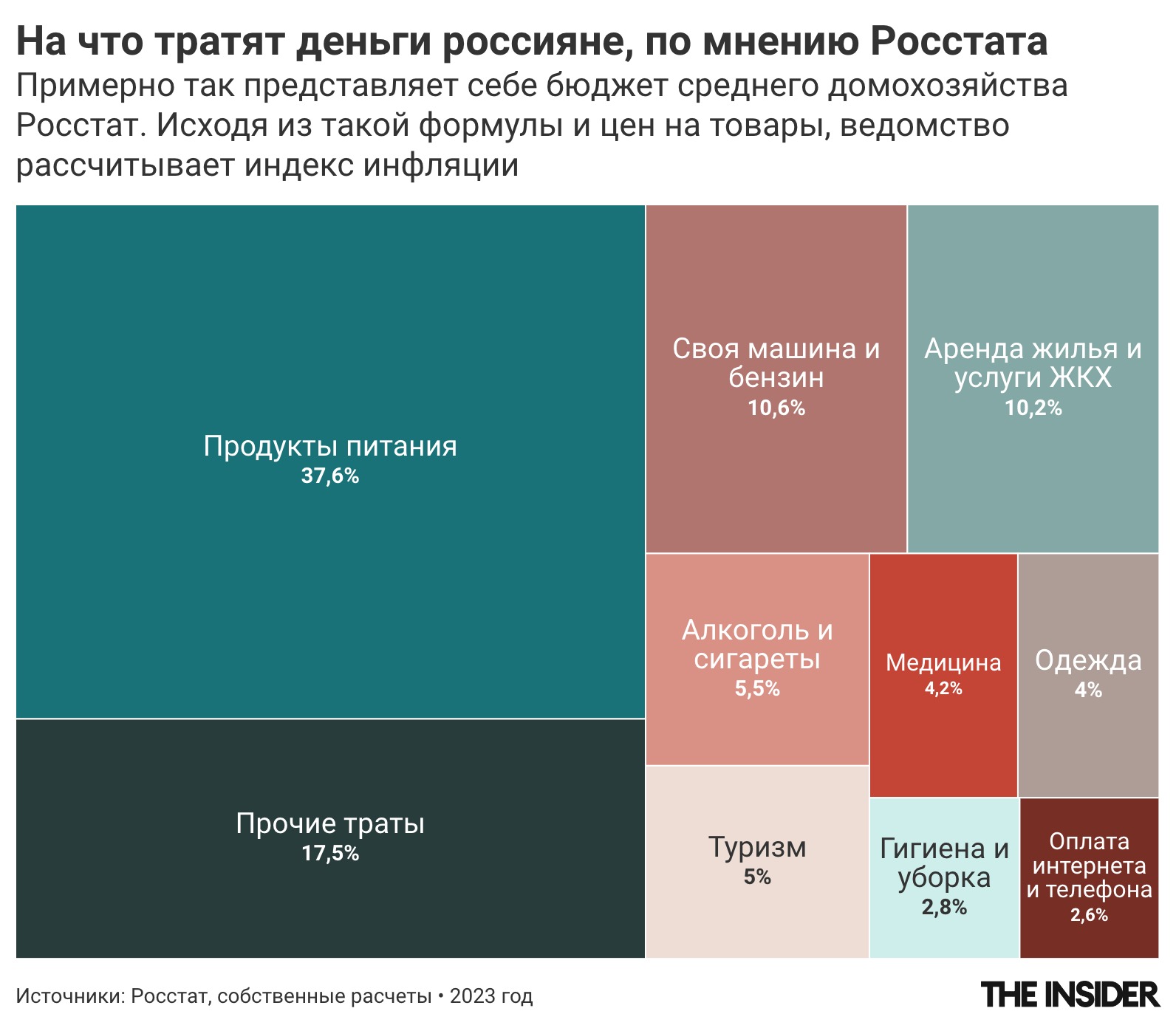
At the same time, the basket includes goods that obviously rise in price much more slowly than others, and many of them are bought almost once in a lifetime or never. For example, there you can find a coffin, an engagement ring, a trip to the United Arab Emirates, a fur coat, long-distance telephone calls charged by the minute, as well as flash drives that are getting cheaper rapidly from year to year.
In addition, it is assumed that the average Russian spends less than 2% of his income on renting an apartment, so the cost of renting in the CPI is almost not taken into account. The cost of living in own housing is not taken into account at all – this is one of the big differences between Rosstat's calculations and Western statistical services. “Rosstat only tracks expenses that are paid directly by the consumer. Thus, the share of housing costs is underestimated – only direct rental costs are taken into account. A number of countries take into account imputed rent, that is, they underestimate the cost of living in their own housing, ”explains Alexander Isakov. According to him, Rosstat is conducting an experiment on such an assessment, and perhaps the formula for calculating the CPI in this part is evolving.
Rosstat believes that an average Russian spends less than 2% of income on renting an apartment
Thus, although the state does not fake the inflation rate, it is still not entirely relevant for a large part of the country's population.
Another Rosstat ploy to underestimate inflation is to track prices and spending only in the largest cities. In each region, 2-4 cities are selected, where the department conducts price measurements.
“Ignoring the spending of villagers is not in line with international recommendations <International Conference of Labor Statisticians, IMF, OECD, Eurostat, World Bank – The Insider> and may underestimate inflation. Rosstat argues this approach, firstly, by the fact that rural residents in Russia go shopping in cities. Secondly, the fact that expanding the coverage area will require a significant increase in the budget of Rosstat, which the government is unlikely to approve, ” wrote analysts at the Center for Macroeconomic Research of Sberbank back in 2017.
Since then, the problem has not been solved, despite the proposals of experts to collect prices from cash registers. “Now Rosstat independently monitors most prices by visiting retail outlets. A number of countries use more cash data of retail chains on sales, scrape prices from sites <automated data collection of sites – The Insider> or purchase data from third parties, ”explains Alexander Isakov.
An alternative point of view on inflation in Russia is provided by the Romir Research Center. Sociologists survey about 40,000 people every month in 220 Russian cities. The Romira consumer basket includes 156 goods, as well as housing and communal services. The latest public data is available for November 2022. Then sociologists calculated that, compared with pre-war November, inflation was 41%. Rosstat also calculated inflation in November 2022 compared to November of the previous year at only 15%.
Dealing with poverty
In March 2023, Rosstat recorded the lowest level of poverty in the entire history of observations. At the same time, real disposable incomes and wages (adjusted for inflation) fell .
The official 2023 definition of poverty is the proportion of the population living below the poverty line. Thus, for it to fall, either people must earn more (at the level of the very poverty line), or the population of the country must increase. The latter is unlikely – the birth rate in Russia has been falling for 8 years now, and the adult population is decreasing – tens of thousands killed, hundreds of thousands mobilized, hundreds of thousands who went abroad.
In order to reduce the number of poor amid the economic crisis, the state is constantly applying new formulas to determine who is poor and who is not. So, in 2020, Putin instructed to halve the poverty rate by 2030. The real incomes of Russians have been falling for years, so in order to achieve the set goal, the law on the living wage was amended to decouple it from food prices (the main source of inflation for the poor). This helped to reduce the level of poverty, but not enough – until 2025 a "transitional period" has been declared, and so far, with the help of coefficients, each region sets the subsistence minimum at will. However, already in the first year of the new methodology for counting the poor on paper, there were 1.7 million fewer, although inflation was high.
Already in the first year of applying the new methodology for counting the poor on paper, there were 1.7 million fewer people, although inflation was high
However, this was not enough, so at the end of 2021, the government introduced another indicator – the “poverty line”. Now it is it that is used to calculate the number of poor in the country. The poverty line is calculated through the cost of the same minimum consumer basket in the fourth quarter of 2020, multiplied by accumulated inflation. For regions, this indicator is determined only once a year. The Insider calculated how far the "poverty line" and the subsistence minimum, determined through the food basket and food inflation, diverge. The poverty line is always below the subsistence level, and if in 2022 the number of the poor was determined in the old way, the poor would not be counted as 14.3 million ( a record low value), but at least 20 million people. This would be comparable to 2015, the first year Russia spent under unprecedented sanctions at the time.
Scams with unemployment and wages
Responsible in the government for social policy and the labor market, Deputy Prime Minister Tatyana Golikova reported that in January 2023, unemployment in the Russian Federation updated a historical low of 3.6%. However, this does not mean at all that everything is good in the labor market in Russia. To achieve such indicators, the government simply re-applies the desired formula.
The figure reported by Golikova is the ratio of the unemployed registered at the labor exchange to the total number of able-bodied population. Accordingly, in order for it to be low, it is necessary that as few people as possible register with the employment service, and the labor force indicator should grow. Number of potential employees in 2020-2021, the covid was slowly mowed down , and in 2022-2023, there was also a war with Ukraine, because men of working age die in it.
And what about registrations at the labor exchange? Their number is also decreasing, and not only for the reasons mentioned. For example, the authorities do not take into account people for whom it simply does not make sense to get to the employment center: regular visits there often cost more than benefits. Due to covid, the state allowed to apply for recognition as unemployed remotely, but you still need to visit the employment center – first to bring the original documents, and then also 1-2 times a month to confirm that a suitable job has not yet been found. Olga Molyarenko explains that in many regions, in order to join the labor exchange, you need to spend several hundred rubles on the road to the regional center. The head of one of the rural settlements of the Vologda Oblast told her about the senselessness of such a trip:
“We have 350 rubles to *** [the district center]. 350, means to go twice a month. It turns out 1400. Eat. And what they give to the unemployed is 900 rubles. What's the point of going twice a month? This is where we're doing really badly."
Many people live on the income of relatives or spouses and see no reason to get registered, partly because they can only find low-paid jobs in their city. Not considered unemployed are women who quit before giving birth to a child and are not going to go to work yet. According to statistics, there were about 10% of such Russians in 2022.
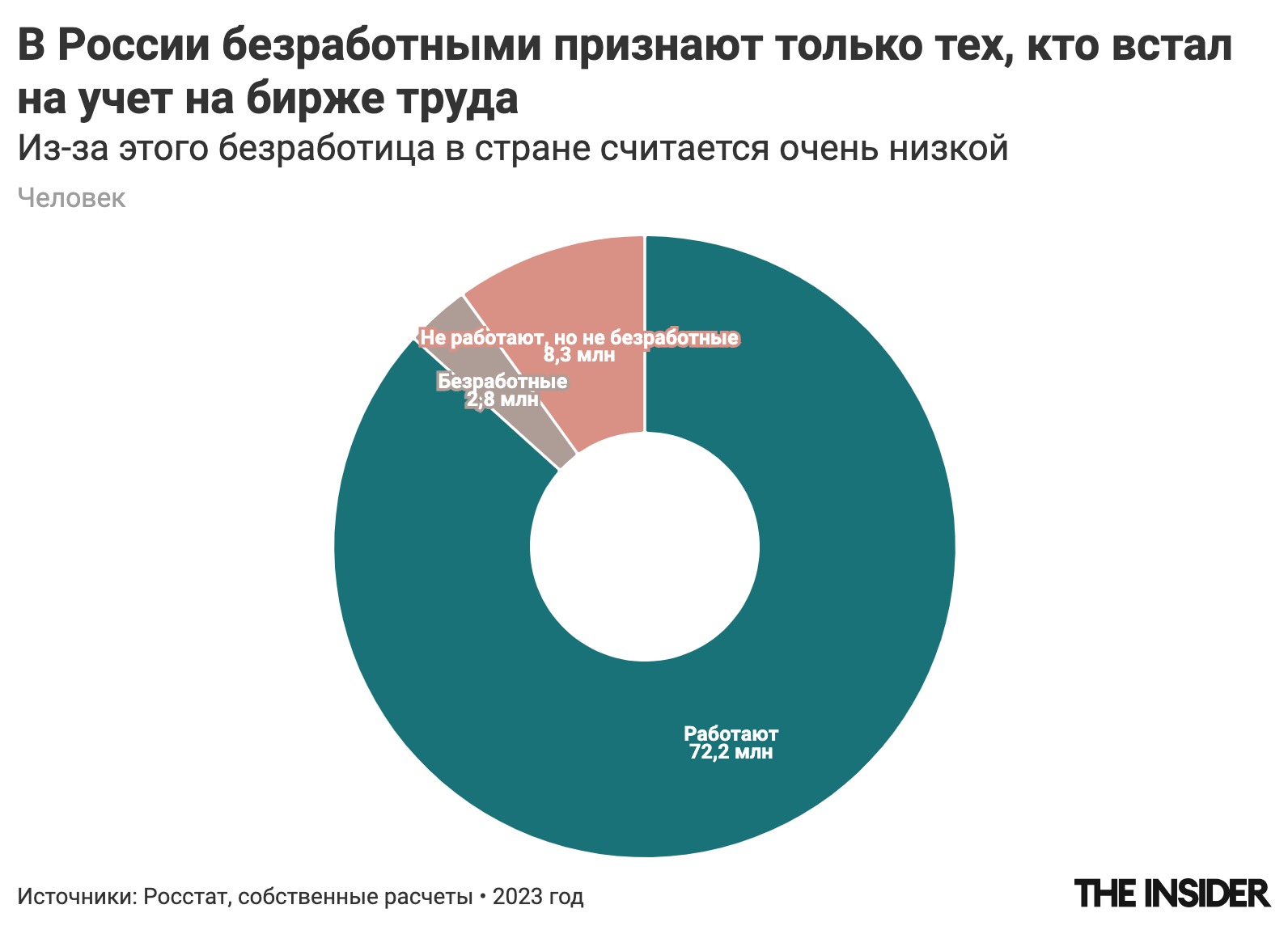
Does not take into account the government in its statistics and part-time employment. The state recognizes a person as working if he works at least one hour a week. Therefore, even during crises, Russia did not register a significant increase in unemployment, although it recorded a drop in wages. Meanwhile, part-time employment and downtime rose in many industries in 2022, most notably in tourism, trade and air travel, Rosstat data show. Thus, the number of workers in the air transportation industry in idle time rose by 2000%, part-time employees at the initiative of the employer – 780 times compared to 2021 (from a few dozen to more than 10 thousand people). In trade, five times as many workers were idle than before the war. In particular, this is due to the fact that some companies that left Russia continued to pay part of the salaries to employees – for example, Inditex (brands Zara, Bershka, Pull & Bear and others), McDonald's, Carlsberg, Renault, Levi's.
Under an agreement with the employer, 4.1 million people were partially employed in 2022, and employers reduced working hours for another 187 thousand without such an agreement.
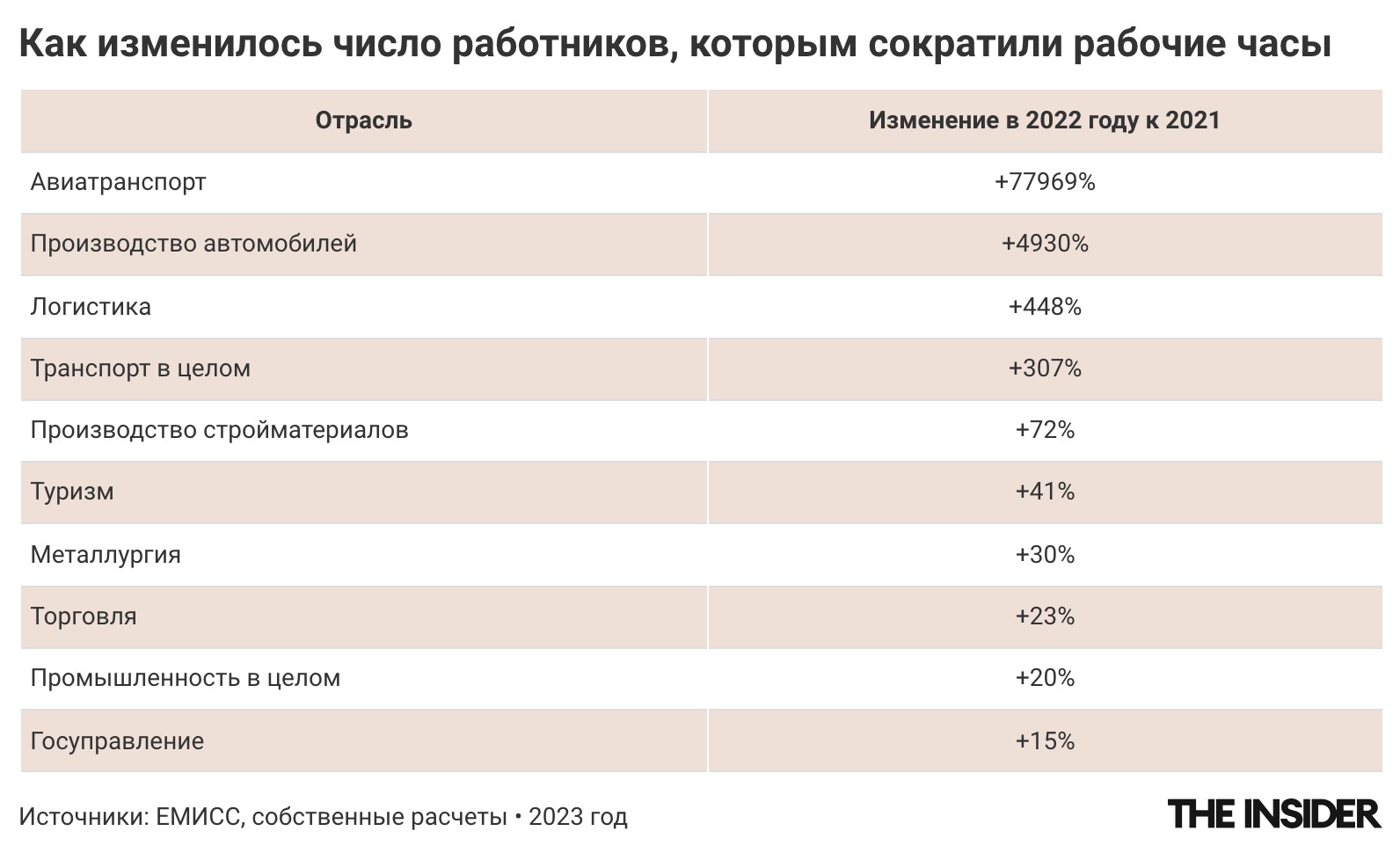
Professor of the Department of Labor Economics and Personnel Management of the Russian University of Economics. G.V. Plekhanov Pavel Zhuravlev told The Insider that in the West, part-time employees are often also taken into account when determining the unemployment rate, and they are also based on the number of applications for benefits.
Fraud with the level of crime
In January 2023, Prosecutor General Igor Krasnov ordered to stop publishing information about crime on the special portal crimestat.ru. It looks like the almost ten-year history of open crime statistics in Russia is over. Это большая потеря для исследователей, но опубликованные данные едва ли отражали состояние преступности в России: в них были как умолчания, так и фальшивые цифры.
Когда в 2013 году Генпрокуратура только начала публиковать открытую информацию о зарегистрированных преступлениях, ведомству уже было известно как минимум о 3 млн ежегодных сокрытий преступлений — примерно столько же было учтенных. Такие случаи ученые-криминологи относят к латентной преступности, и именно с ней собиралась бороться Генпрокуратура через системный сбор информации и публикацию открытых данных. Как писали исследователи практик правоприменения в России Мария Шклярук и Дмитрий Скугаревский, она достигает 10% от всей преступности.
Помимо этого, существует естественная латентная преступность — когда правоохранительные органы не знают о происшествии и, соответственно, не ставят его на учет. Например, россияне часто не сообщают в полицию о телефонном мошенничестве, которое за последние пять лет стало одним из самых популярных видов преступлений. Согласно опросу Института проблем правоприменения, после краж, грабежа, нападения примерно две трети россиян обращаются в правоохранительные органы, при этом в случае с телефонным мошенничеством — только около 40%. А если попытка не увенчалась успехом, — только 10% пострадавших пишут заявление в полицию.

В России KPI полицейских — количество зарегистрированных и раскрытых преступлений. Приказ МВД по мотивам медведевского закона «О полиции» в теории отменил «палочную систему», но по факту нормы всё равно остались, пусть и в измененном виде. В частности, рост числа зарегистрированных тяжких преступлений оценивается отрицательно, а доля преступлений, по которым быстро удалось найти обвиняемого и отправить дело в суд, — положительно. При этом рост числа оправданных в суде для правоохранительных органов будет засчитываться в «минус». Вероятно, именно поэтому шансы получить оправдательный приговор в России, как подсчитала «Новая газета Европа», равны 0,15%.
Помимо этого, эффект «палочной системы» можно увидеть в статистике, которую публиковала Генпрокуратура. По некоторым статьям преступления совершаются редко — и вдруг откуда-то появляется резкий рост. Статистически такие явления трудно объяснимы, зато легко объясняются тем, что полицейским дали указание повысить раскрываемость по конкретной статье. В частности, так было с преступлениями по ст. 327 УК РФ (подделка документов) и мигрантскими рейдами.
Чтобы отрицательных показателей в отчете о работе было меньше, можно реже принимать заявления о преступлениях, что и делают полицейские. Особенно если речь идет о тяжком преступлении или если дело будет трудно раскрыть. Об этом писали исследователи практик правоприменения в России Мария Шклярук и Дмитрий Скугаревский. В своей работе они цитируют анонимного прокурора в одном из регионов страны:
«Как можно сделать так, чтобы эта цифра < доля раскрытых преступлений — The Insider> выросла или упала? Значит, первое — это входной контроль. Идете вы в отдел полиции (вздыхает) — блин, ну, это отдельно надо — идете вы в отдел полиции, а вам там говорят… В худшем случае он просто закрыт. Ну, закрыт и всё. Не достучаться. Пьяный там, спит или еще что-то. Просто смотрит: кто там пришел? Да пошел на хрен. Не открою. Ну, это к удаленным сельским относится. То есть вас ограбили на улице, вы бежите — и бежите за полицией: как бы, вот тут, быстрее, быстрее, быстрее, вот — а там закрыто. Это простейший вариант. Учетно-регистрационная дисциплина — простейший вариант. Это нарушение в сфере учетно-регистрационной дисциплины. Второй вариант. Всё-таки открыли. Ой! Опера нет. Дежурный опер вас должен принять. Дежурный. Его нет. Он утром придет. Или еще что-то. Вас мурыжат, пока вы не махнете рукой и скажете: ”Да ну их, на хрен. Пошел домой”. Да? Это второй вариант. Третий вариант: вы всё-таки человек настойчивый, дождались дежурного опера. Он начинает вам говорить, начинает вас «морозить» разными способами. ”Я запишу всё себе в тетрадочку. Найдем. Вас тут же известим”. Но ничего не предпринимает».
Однако причина недостаточного сбора данных о преступлениях не только в «палках» и нарочно не принятых заявлениях. Из-за реформы МВД , проходившей в 2010–2011 годах, сократилась штатная численность органов внутренних дел России. Если в 2010–2011 годах на средний муниципальный район приходилось 15 участковых, собирающих первичную информацию, то сейчас — только трое, объясняет Ольга Моляренко. Поэтому они физически могут не уследить за записью всех преступлений.
Помимо этого, полицейские могут еще и искажать состав преступлений. Например, о такой практике рассказывает криминолог Алексей Кнорре из Университета Пенсильвании и петербургского Института проблем правоприменения. Он выписывал из карточек о преступлениях вес изъятых героина и марихуаны и потом анализировал эти данные. Оказалось, что количество вещества у обвиняемых было не случайным, а как будто нарочно оказывалось за гранью «значительного размера» и «крупного размера» в терминологии Уголовного кодекса. Таким образом, перед тем как быть пойманными, наркоторговцы и потребители героина или гашиша всегда имели ровно такое количество наркотика, которое позволило бы осудить их по более тяжкой статье, и почти никогда такое, которое позволило бы дать им менее тяжкую статью.
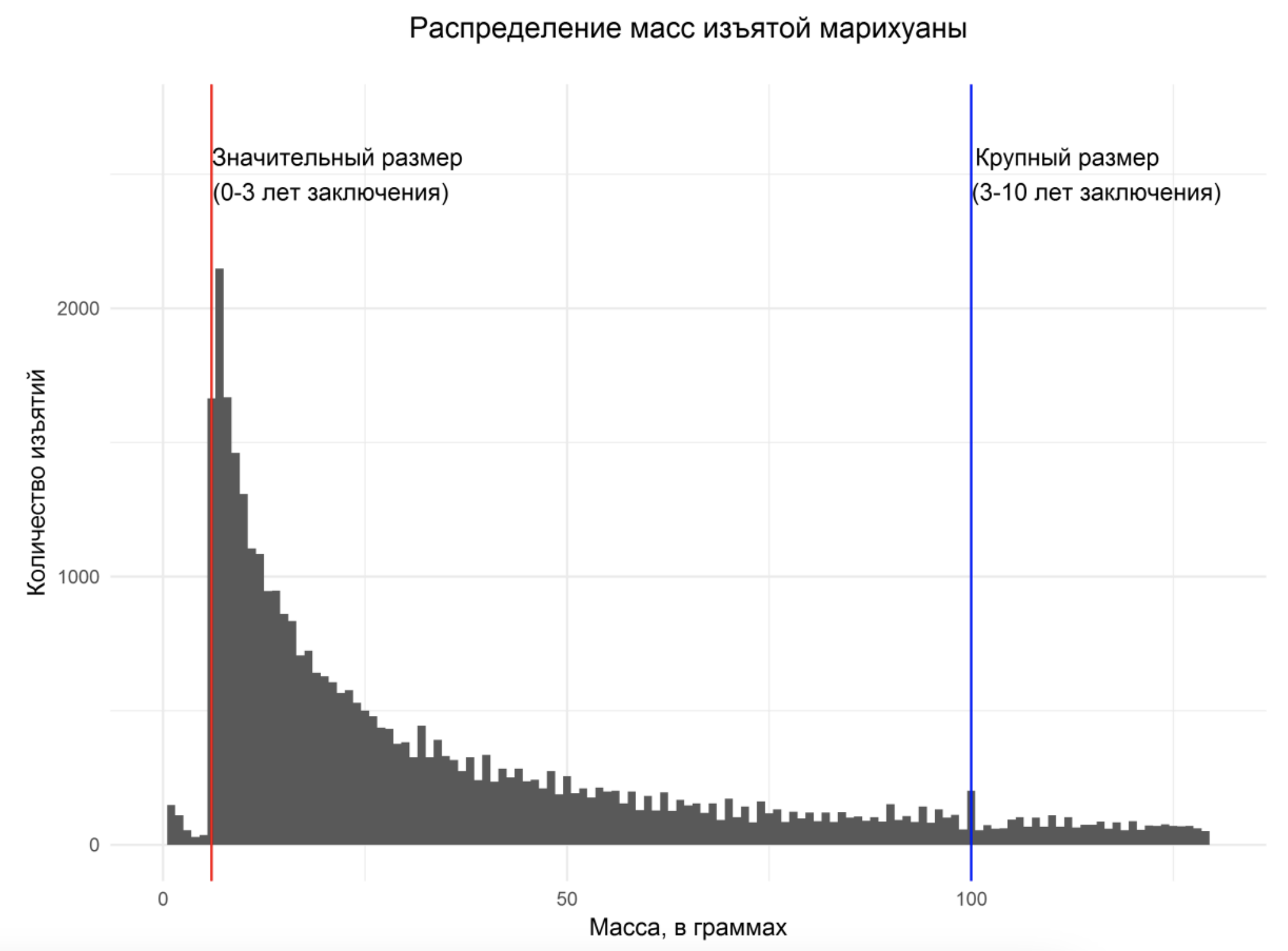
С точки зрения статистики такое распределение веса изъятых наркотиков маловероятно, поэтому нельзя исключать, что наркотики обвиняемым подбрасывали — в жизни или на бумаге — до «нужного» веса. «Я пока не знаю ни одного внятного, не связанного с полицейской коррупцией, объяснения, почему в героине, изъятом у наркопотребителей, гораздо чаще встречаются массы в 2,5–3 грамма, и гораздо реже в 2–2,5, — ведь именно после 2,5 грамма квалификация преступления становится более тяжкой», — комментировал исследование Кнорре.
Когда преступления не регистрируют или регистрируют избирательно, искажается картина преступности в стране. Это заставляет государство принимать неправильные решения об управлении правоохранительными органами, полиции мешает адекватно оценивать преступную ситуацию в городе или районе, а граждан делает более незащищенными и недоверчивыми.
Автор благодарит экспертов, пожелавших остаться анонимными, за участие в подготовке материала.


